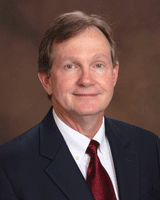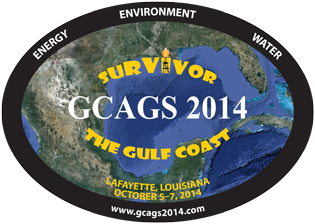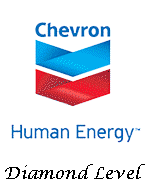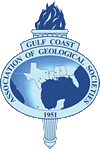All-Convention Luncheon
(Sponsored by Stone Energy)
“Mesozoic of the Gulf Mexico Revisited: New Data, New Concepts, and New Plays in the Onshore and Offshore Gulf of Mexico”
Dr. John W. Snedden, Senior Research Scientist, University of Texas at Austin
Monday, Oct. 6 • 11:30 am–1:00 pm • $35
Location: Iberia/St. Landry/St. Martin/St. Mary Rooms
Abstract: The Gulf of Mexico Basin is one of the richest hydrocarbon basins of the world, with estimated ultimate recoverable hydrocarbon reserves exceeding 140 BBOE. However, opportunity space in the primary Paleogene subsalt play of the ultra-deepwater is beginning to narrow and operators are looking more closely at the Mesozoic in offshore areas, particularly in the eastern Gulf of Mexico. This is timely as emerging new ideas are leading to a reevaluation of the Mesozoic framework history, including how the Chicxulub impact event at the end of the Cretaceous altered the deep Gulf of Mexico seascape and set up subsequent deepwater deposition. New models have been formulated for the timing and distribution of salt deposition and sea-floor spreading. Our understanding of the Mesozoic source to sink system transport system and basin entry points continues to evolve. Onshore Gulf of Mexico drilling and new biostratigraphic data from deepwater wells has reinvigorated Mesozoic biostratigraphy work. Wells drilled in the deep subsalt province have altered our view of the Mesozoic source to sink depositional pathways, leading us to question previous North American paleogeographic maps. Onshore, exploitation of source rocks as shale gas plays in the Jurassic Haynesville and Cretaceous Eagle Ford and Tuscaloosa Marine Shale have generated significant drilling activity and this in turn has stimulated a reexamination of interpreted Mesozoic source rock distributions, including offshore areas of the Gulf of Mexico. Our perspective on the Mesozoic exploration potential is likely to change as well, given new and ongoing seismic refraction and reflection work.
|
 |
Biography: John W. Snedden is Senior Research Scientist and Director of the Gulf Basin Depositional Synthesis Project at the Institute for Geophysics, University of Texas at Austin. He received his B.A. from Trinity University (San Antonio), his M.S. at Texas A&M University (College Station), and Ph.D. from Louisiana State University (Baton Rouge). With multiple domestic and international assignments, he worked for Mobil and ExxonMobil for over 25 years in research, exploration, development, and production prior to joining UT. John has published on modern and ancient lagoonal, fluvial, deltaic, shelfal, and deepwater deposits as well as sequence stratigraphic correlation and reservoir connectivity. He has served as Vice-President of GCSSEPM and Secretary-Treasurer of SEPM. John has won the SEPM Excellence in Oral Presentation award and, with his co-authors, is the first recipient of the GCAGS Journal Best Paper Award. |
Bouma Symposium Luncheon
(Sponsored by Talisman)
“A Half-Century of the Turbidite”—A Luncheon in Honor of Arnold H. Bouma
Moderated by Dr. Erik Scott, Stratigraphy Advisor, Talisman Energy USA, Inc.
Tuesday, Oct. 7 • 11:30 am–1:00 pm • $35
Location: St. Martin/St. Mary Rooms
Arnold H. Bouma commenced his geological studies in Groningen in 1951, under the tutorship of Professor Kuenen. An assistantship enabled him to help with many of the experiments of Professor Kuenen and Dr. Van Straaten. After obtaining his bachelor’s degree, he went to the State University of Utrecht. From 1956 to 1960 he was assistant to Professor Doeglas. In 1960 he was elected treasurer to the Internationals Association of Sedimentology. Dr. Bouma obtained his Master of Science degree in 1959 and his doctor’s degree in 1961. –Biography from “Sedimentology of Some Flysch Deposits” (1963).
|
 |
In 1963, Arnold Bouma published his thesis, “Sedimentology of Some Flysch Deposits,” documenting his observations of sandstone beds predominately in outcrops around Peira Cava, France, and introducing a systematic depositional pattern from a turbulent flow, which has become known as the Bouma Series. Over the next fifty years, this concept has been expanded upon by many geologists, fundamentally advancing our understanding of sedimentological processes occurring not only in deepwater settings, but everywhere sediment gravity flows occur.
Arnold also had a more direct impact on numerous students and colleagues during his career in academia, industry, and government. Many stories can be told of interacting with Arnold at conferences, in the classroom, and out in the field on the outcrops. |
| This luncheon will provide an opportunity to share stories about Arnold, especially ones he personally would have loved to recount. Arnold was a huge supporter of GCAGS, making this the perfect venue for remembering Arnold’s contribution to sedimentology and his influence on sedimentologists. |
|






